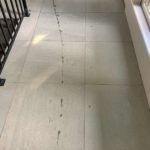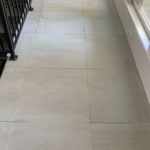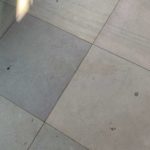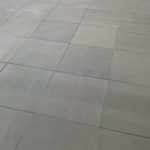Slate is metamorphic rock that is easily split into smooth, flat pieces used in a wide variety of applications including flooring and flagging because of its durability and rustic, attractive appearance.
💡 Did you know the use of slate as a construction material can be traced back to at least the Roman times in Wales, from the first to the fourth century AD. The slate used in roofing had to be of very high quality, as the material is prone to cracking and can break if not handled with great care.
Working with slate can be a challenge as it comes in several different textures and can be fragile. There is a smooth slate and a cleft finish, that is, a rough finish. Consequently, slate restoration methods differ from that of other natural stone types, and only experienced, qualified slate restoration technicians like we have at Boston Stone Restoration should work on it. Slate is a charming focal point to any home or business installation but is a porous stone that needs to be properly cleaned and sealed after installation.
We recently were contacted to work on a large slate floor in Newport, Rhode Island that had endured years of hardship. During a construction project, workmen accidentally spilled grease on a large section of slate flooring. Fortunately, the homeowner did not try to fix it on their own and called in the professionals. After carefully cleaning the floor and then honing it to even out the finish, we applied a sealer to help keep the floor and grout lines clean. This floor will require periodic maintenance to ensure it stays clean and protected from damage.
- Grease stain before
- Grease stain after
- Aging slate floor before
- Full slate floor restoration




